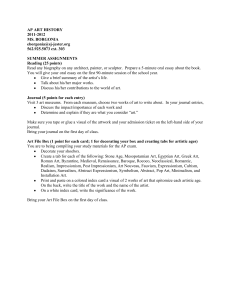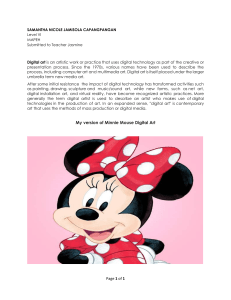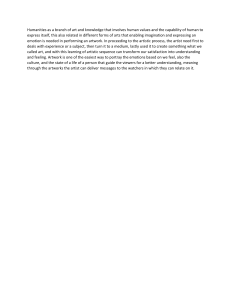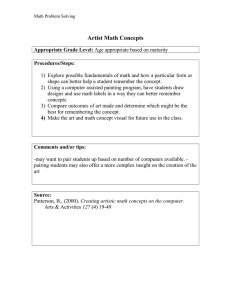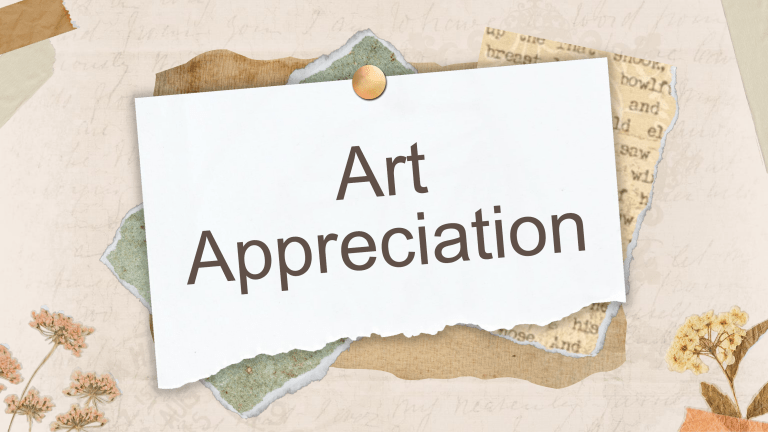
Lesson 3: How Do I Study Art?: Reading Art Art Period -a specific length of time in history with a prominent movement, trend or creed in artistic practice. Art movements - are sets of distinguishable styles and artistic tendencies often characterized by a major trend in techniques or approach. - It suggests a certain attitude toward painting or any art-making Prehistoric -cave paintings, Venus figurines -Greek standard of beauty: the birth of Classical Age -Romans: the competitor of Greece, created realistic sculptures of Human figure Venus of Willendorf - One of the famous Venus figurines of the Upper Paleolithic. Cuevas de las Manos in Argentina Middle Ages -the death of artistic freedom due to canonical standards of visual interpretation -The rise of Gothic art especially in Gothic Churches -Popular art: Stained glass windows and illuminated manuscripts -Main theme of art: religious; art was produced for the purpose of glorifying God The Lindisfarne Gospels by Eadfridth Codex Aureus of St. Emmeram Renaissance -revival of artistic genius -where the term “Renaissance Man” was derived because of man’s intellectual achievements in the arts and science -the time of “Masters” e.g., Donatello, Da Vinci, Michaelangelo, Raphael, and Van Eyck The Creation of Adam by Michelangelo Buonarotti The Virgin of the Rocks by Leonardo Da Vinci The Calling of St. Matthew Baroque -Grandiose and ornate art -artistic innovation: “spotlight effect” called chiaroscuro or in extreme usage, it is called tennebrism -Artists to note: Caravaggio (Italy), Velasquez (Spain), Poussin (France), and Antonio Gaudi designer of “Sagrada Familia” chapel in Barcelona The Calling of St. Matthew by Caravaggio The Loves of the Gods by Annibale Carracci 19th century -emergence of “isms” -Neoclassicism: Greek and Roman Classics revived -Romanticism, Realism, Art Nouvveau, Impressionism -Photography comes into the scene - Post-impressionism, early expressionism and symbolism The Gleaners by Jean-Francois Millet The Card Players by Paul Cezanne Pablo Picasso - Les Demoiselles d'Avignon, 20th century Modern Art -Art became more non-representational -Garish colors explored in fauvism -Abstracted sculpture emerged -simplified forms in paintings by Picasso and Matisse -Art movements: Cubism, Futurism, Constructivism, Expressionism -Mondrian’s purely geometric art The Egyptian Curtain by Henri Matisse Les Demoiselles d'Avignon by Pablo Picasso Art During the Wars - Dadaism: the art movement that defines logic - Surrealism: stepping into the dream world - American Art blossoms: Jackson Pollock became famous as “Jack the Dripper” and paved the way for American Abstract Expressionism - Mobile sculptures (Alexander Calder) and Color Field (Rothko) paintings also became prominent Color Field Mobile Sculpture 20th century to Contemporary -Highly experimental and radical -Pop art defines consumer culture; dominated mostly by works of Andy Warhol -Minimalism: glorifying the simplest art elements -Birth of conceptual art -Photography is further developed which paved way to art movement, Photorealism -Neo-expressionism or new expressionism- characterized by strong subject matters -Contemporary Art: a very diverse art scene; rise of appropriation, photography-derived works, graphic style of art, experimental works, multimedia and multi-modal art Garden by David Hockney Proe Insight: If art history is an objective study on art, art criticism will teach us how to apply critical thinking when looking and interpreting forms of art. Hence history directs us to a more holistic critique of art. If you are a work of art, how would you like to be criticized? Do you want to be judged or dismissed right away? Or would you rather be examined carefully first before arriving at a conclusion? -is the discipline of the arts that seems to be both healthy and dying (Elkins, n.d.) 1. 2. 3. 4. 5. 6. 7. Formalism and Style Iconography Contextual Approaches Biography and Autobiography Semiotics Psychoanalysis Aesthetics and Psychoanalysis 1. Formalism and Style - basis for the meaning of art are formal qualities such as art elements, materials and design principles -Roger fry is the major purveyor of this thinking 2. Iconography - focuses on subject matter. -who is this person the artist painted and what does it represent? -Why did the artist choose this image and what for? 3. Contextual Approaches - context becomes an important factor in criticizing artworks here • Marxism- about art in relation to economics • Feminism- gender becomes a strong factor in the forces behind an artistic creation 4. Biography and Autobiography -considers the life and context of the artist - artist’s life, beliefs, choices and personality are directly connected to the works that he/she creates 5. Semiotics -from the Greek word “sema” which means sign - art form is assumed to be composed of a set of signs that may have significant cultural and contextual meanings beyond itself 6. Psychoanalysis (Freud) -concerned about the unconscious mind in relation to the artist, the viewer, and the cultural context it is involved 7. Aesthetics and Psychoanalysis -what is considered acceptable, beautiful or attractive in works of art are in part influenced by psychological factors Assessment: Many of us like entertainment and social media. It is flamboyant, noisy, and easily catches our attention. We often just take in the information and news they provide without sifting through them and realigning what we have heard or seen with our values as a person. In the discipline of art criticism, what did it teach you about the act of looking? Should you just accept what is placed before you? Why do you think it is better to counter-check every judgment that comes in into our heads, not just in art, but also in everyday life? Create a one-paragraph essay for your thoughts. Application: After learning further approaches on reading art, analyze the artwork “The Fall of Man” by Cornelis Cornelisz van Haarlem. Just choose three of the methodologies discussed that you will use in analyzing such artwork. THANK YOU!
